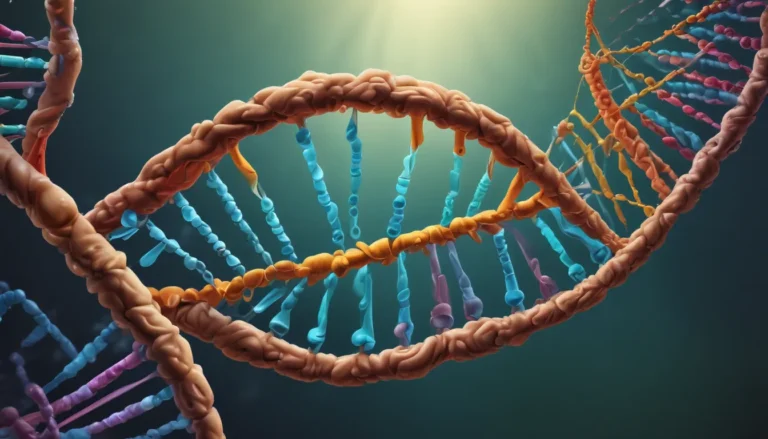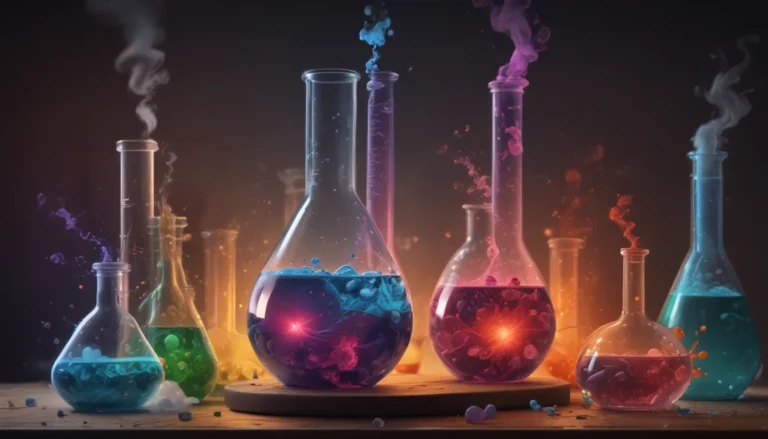A Note About Images: The images used in our articles are for illustration purposes only and may not exactly match the content. They are meant to engage readers, but the text should be relied upon for accurate information.
Introduction:
Embark on a journey into the captivating world of chemistry as we delve into the realm of dipole-dipole interactions. These interactions, which occur between polar molecules, are essential in understanding how substances behave and interact at a molecular level. In this article, we will uncover 14 fascinating facts about dipole-dipole interactions that will enhance your knowledge and ignite your curiosity. Get ready to explore the exciting world of molecular forces and discover the impact of these interactions on various chemical processes.
Exploring the World of Dipole-Dipole Interactions
1. The Nature of Intermolecular Forces
Dipole-dipole interactions are one of the three main types of intermolecular forces, alongside London dispersion forces and hydrogen bonding. These interactions arise from the attraction between the positive end of one polar molecule and the negative end of another polar molecule.
2. The Role of Dipole Moments
The strength of dipole-dipole interactions is determined by the magnitude of the dipole moment in a molecule. Molecules with larger dipole moments experience stronger interactions compared to those with smaller dipole moments.
3. Boiling and Melting Points
Substances that exhibit dipole-dipole interactions tend to have higher boiling and melting points due to the attractive nature of these interactions. Breaking these forces requires more energy, resulting in elevated boiling and melting points.
4. Influence on Physical Properties
Dipole-dipole interactions play a crucial role in shaping the physical properties of substances. They impact characteristics such as solubility, viscosity, and surface tension, influencing the behavior of molecules in various chemical processes.
5. Molecular Arrangement and Alignment
Dipole-dipole interactions can align molecules in a specific orientation, leading to a unique arrangement that affects the overall structure and properties of the substance. In some cases, these interactions result in the formation of molecular crystals with highly ordered structures.
6. Impact on Chemical Reactions
In chemical reactions involving polar molecules, dipole-dipole interactions can influence the rate of the reaction. Depending on the nature of the molecules involved, these interactions can either facilitate or hinder the reaction process.
7. Role in Spectroscopy
Dipole-dipole interactions are essential in spectroscopic techniques such as infrared spectroscopy. These interactions cause shifts in the vibrational and rotational energy levels of molecules, producing characteristic absorption patterns.
8. Temperature Dependence
Dipole-dipole interactions can be weakened by an increase in temperature, as thermal energy disrupts the intermolecular forces. Conversely, lowering the temperature can enhance the strength of these interactions, leading to changes in the substance’s behavior.
9. Solubility Effects
Dipole-dipole interactions influence the solubility of polar substances in polar solvents. When a polar solute is added to a solvent with similar polarity, these interactions enhance solubility by attracting the molecules to each other.
10. Contribution to Biological Stability
In biological systems, dipole-dipole interactions contribute to the stability of macromolecules such as proteins and nucleic acids. These interactions help maintain the folded structure and proper functioning of essential biomolecules.
11. Chemical Reactivity
Dipole-dipole interactions can significantly impact the reactivity of chemical compounds. The strength and orientation of these interactions play a crucial role in determining the efficiency and outcome of chemical reactions.
12. Applications in Everyday Life
Dipole-dipole interactions are evident in everyday phenomena such as the dissolving of substances in solvents, the behavior of household cleaning products, and the alignment of liquid crystals. Understanding these interactions enhances our comprehension of the world around us.
13. Manipulation in Chemical Processes
Chemists can manipulate dipole-dipole interactions through changes in temperature, pressure, and the introduction of other compounds. This ability to control these interactions allows for the manipulation of reactions and outcomes in chemical processes.
14. Beyond Chemistry
The impact of dipole-dipole interactions extends beyond the realm of chemistry, influencing fields such as biology, materials science, and pharmacology. Understanding these interactions enables scientists to innovate and discover new applications in various industries.
Conclusion
In conclusion, dipole-dipole interactions are a fundamental aspect of chemistry that shapes the behavior of molecules and substances. By delving into these interactions, we can unravel the mysteries of molecular forces and their impact on our everyday lives. Through the exploration of these 14 intriguing facts, we gain a deeper understanding of the captivating world of dipole-dipole interactions and their significance in various scientific disciplines.
Was this article informative? At [Your Website Name], we are committed to providing accurate and engaging content that educates and inspires our readers. Each fact presented is meticulously reviewed to ensure credibility and reliability. Join us on a journey of discovery and learning as we explore the wonders of science and the world around us.






